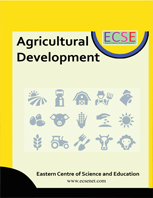Exploring Oyster Mushroom (Pleurotus Ostreatus) Mycelium as a Sustainable Biodegradable Plastic Packaging
DOI:
https://doi.org/10.55220/25766740.v10i4.371Keywords:
Biodegradable, Bioplastic, Durable, Elastic, Mycelium.Abstract
This study was geared toward exploring oyster mushroom (Pleurotus ostreatus) as a sustainable biodegradable plastic packaging material. Plastics are commonly used as packaging materials in the market industry. However, the continuous use of conventional plastic is inadequate for the environment. The development of bioplastic packaging made from mushroom mycelium intends to lessen the use of plastics. The bioplastic samples were subjected to different tests and parameters to measure their mechanical properties, including tensile strength, water solubility, durability, biodegradability, and cost in the market. The following were the treatments for the development of mycelium bioplastic: Treatment 1 (no mushroom mycelium), Treatment 2 (5g mushroom mycelium), Treatment 3 (10g mushroom mycelium), Treatment 4 (15g mushroom mycelium), Treatment 5 (20g mushroom mycelium). The results revealed that Treatment 5 (20g mushroom mycelium) had the highest tensile strength (8.33 inches) among the treatments, which concluded that the more mycelium added, the stronger the bioplastic made. In terms of water solubility, all the mycelium bioplastic samples were dissolved. For its durability test, Treatment 5 (20g mushroom mycelium) stretched to inches and was considered highly durable among the treatments, which means that the mushroom mycelium made it more durable. For the biodegradability of the mycelium bioplastics, which were buried for 15 days, Treatment 5 (20g mushroom mycelium) had the highest percentage of biodegradability (5.63%). The results revealed that the higher the amount of mycelium present, the more elastic, soluble, durable, and biodegradable the bioplastics.






